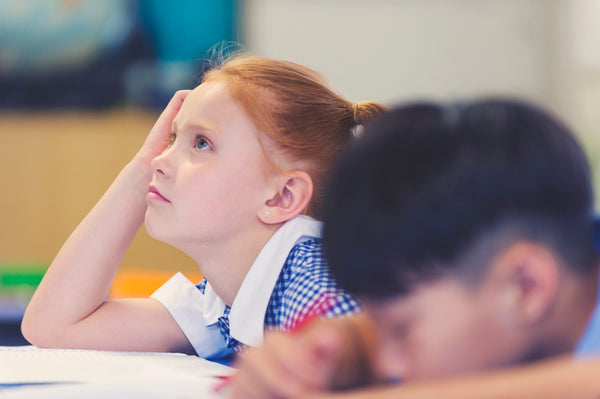Unlock Learning Potential with Metacognition
Did you know that teaching children metacognition can help them manage their learning, self-regulate and problem-solve?
What is Metacognition?
Metacognition is the ability to reflect and monitor your own learning. It involves being aware of how you think and understanding how you learn best.
Teaching metacognition involves sharing strategies which support children to set goals, plan, monitor and evaluate their learning, while also empowering them to select the most suitable strategy for a given task for themselves.
Metacognition in childhood
The maturation of metacognition is an integral part of child development. Basic metacognitive abilities, such as awareness of one’s own knowledge and understanding, begin to emerge in children at around 3-5 years old. Children can recognise if they do or do not know the answer to a question or seek help when faced with a problem they can not solve on their own (Flavell, 1979).

During early childhood, children's metacognitive abilities continue to develop as they gain more experience in a range of learning tasks and social interactions. Children of this age start develop self-monitoring. They might pause when reading a story to reflect on whether what they have read makes sense, for example. They also start to apply metacognition to solve problems, considering alternative options and adjusting their approach based on observations and experiences.(Schraw & Moshman, 1995).

Metacognitive development becomes more sophisticated during middle childhood, with children demonstrating increasing awareness of their cognitive processes and learning strategies. They become more proficient at setting goals, planning tasks, monitoring their progress and evaluating their own performance (Duncan & McKeachie, 2005).
Why is metacognition important?
Metacognition plays a pivotal role in shaping children's learning experiences and outcomes. Indeed, numerous research studies have demonstrated that teaching metacognition significantly improves children's learning outcomes. According to the Educational Endowment Foundation, children who are explicitly taught metacognitive strategies can make up to seven months of additional progress compared to their peers who are not.
Metacognition is important for children of all abilities and backgrounds. Indeed, research suggests that the most vulnerable children have the most to gain from the acquisition of metacognition strategies, making teaching metacognition one of the most effective means to close the attainment gap and move towards more equitable provision.
For Children:
Understanding their preferred learning styles enables children to plan and execute their learning tasks more effectively. By supporting children to establish autonomy and control over their learning, we enhance their motivation and self-confidence, leading to improved progress and attainment outcomes. Additionally, this self-awareness aids their emotional regulation and problem-solving capabilities - essential life skills.
For Educators:
Recognising the significance of metacognition in learning equips educators to include and prioritise strategies that empower children to take ownership of their learning journey. This understanding enables us to provide more precise and effective feedback to our children, fostering a supportive environment conducive to their personal growth and academic development.
So, teaching metacognition can drive improved progress and attainment outcomes for children and inspire children to become happier, more motivated learners.

How to Improve Metacognition in Your Classroom
While teaching children about metacognition need not be complicated, you can not simply expect children to automatically assume responsibility for their learning. Creating a positive metacognitive culture requires thoughtful implementation. Here are some top tips for embedding effective metacognition teaching in your setting.
Model Metacognition
Think out loud as you teach to demonstrate your own thinking processes as you approach various tasks, such as interpreting a text or solving a mathematical problem. This will provide children with a toolkit to draw upon for their own work.
Explicitly Teach Metacognition
Make time to teach children how to set goals, plan, and reflect on their learning tasks and make sure to offer specific feedback. Start small with simple activities and gradually increase their complexity. One way to do this is by asking children to identify the three spellings they most need to practise for the coming week. Another example is to set personal goals at the beginning of each new term and review them weekly.

Promote Metacognitive Discussion
Provide children with regular opportunities for children to reflect on their learning through activities, like journaling or class discussions. Ensure they have learned the vocabulary necessary to articulate their thoughts effectively, especially relating to lesson objectives or learning intentions. Your style of questioning can make all the difference to the depth of children’s reflection. Try asking your children to explain their reasoning with questions such as “How do you know?”, “ What could you do to improve?”, “What went well and why?” and “What helped you be successful?”.
Embed Metacognition In Your Lessons
Metacognitive practices are most impactful when they are embedded in your everyday curriculum. Encourage children to plan, monitor, and evaluate their learning in lessons across all subjects. This gives children the best opportunity to employ metacognitive strategies as a matter of habit.
Think Goldilocks
Strike the right balance. Provide challenges that allow children to develop effective strategies without overwhelming them. This will help to create an environment where children are confident enough to take risks and establish some resilience around experiencing setbacks.
By incorporating the teaching of metacognition into your standard practice, you will empower your children to manage their own learning, solve problems and regulate their emotions.
Support yourself with PlanBee Teaching Resources and Memberships
Explore PlanBee's teaching resources and memberships and access ready-to-use lesson plans, teaching slides and learning activities with a range of access points for your learners and plenty of stretch and challenge.
References:
- Flavell, J. H. (1979). Metacognition and cognitive monitoring: A new area of cognitive-developmental inquiry. American Psychologist, 34(10), 906–911.
- Schraw, G., & Moshman, D. (1995). Metacognitive theories. Educational Psychology Review, 7(4), 351–371.
- Duncan, T. G., & McKeachie, W. J. (2005). The making of the motivated strategies for learning questionnaire. Educational Psychologist, 40(2), 117–128.







